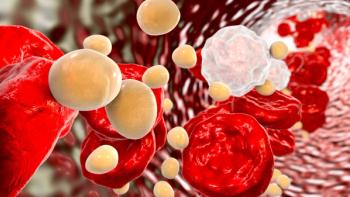
Study Identifies Non-Th2 Asthma as Unique Disease, Demonstrates Air Pollutant as Likely Contributor
This is the first study to demonstrate air pollution as a driver of the most challenging type of asthma to treat, the severe non-Th2 subtype, which is non-responsive to current therapies.
A new epidemiological study published in the Environmental Health Journal has shown that T helper cell low (non-Th2) asthma, the most severe asthma manifestation, is a distinct disease from T helper cell high (Th2-high) asthma. Non-Th2 asthma was also found likely to be induced through early childhood exposure to airborne benzo[a]pyrene, a byproduct of fossil fuel combustion. This is the first study to demonstrate air pollution as a driver of the most challenging type of asthma to treat, the severe non-Th2 subtype, which is non-responsive to current therapies, according to the study authors.
Asthma is an umbrella term for multiple diseases with common symptoms afflicting more than 300 million people globally. Th2-high is associated with early-childhood allergies to common pollutants such as pet dander, tree pollens, or mold. Non-Th2 has no associations with an allergic response and is far less understood than Th2-high, and frequently results in severe adult cases.
“Non-Th2 asthma is associated with very poor prognosis in children and great, life-long suffering due to the absence of effective therapies,” said Hyunok Choi, PhD, MPH, associate professor at the Lehigh University College of Health, in a press release. “There is an urgent need to better understand its mechanistic origin to enable early diagnosis and to stop the progression of the disease before it becomes severe.”
Non-Th2 asthma accounts for more than 85% of cases worldwide and it particularly affects low-income countries. Studies have shown that nearly 50% of children whose asthma is poorly controlled are expected to emerge as severe adult cases, yet the condition continues to be treated with an ineffective one-size-fits-all approach, according to the researchers.
“The primary reason for lack of therapeutic and preventive measures is that no etiologic, or causal, driver has ever been identified for the non-Th2 asthma,” Choi said in the release.
The researchers tested 2 comparable groups of children from the industrial city of Ostrava in the Czech Republic and its surrounding semi-rural area. Participants included 194 children with asthma and a control group of 191 without the condition.
According to the study, Ostrava is an industrial city with a high level of coal mining activities, coal processing, and metallurgical refinement. The district-level ambient mean for Benzo[a]pyrene at the time of their investigation was 11-times higher than the recommended outdoor and indoor air quality standard.
Elevated exposure to benzo[a]pyrene was associated with correspondingly elevated odds of non-Th2 asthma, according to the researchers. Additionally, it was associated with depressed systemic oxidant levels.
“Contrary to the current body of evidence supporting adult onset of non-atopic asthma, our data suggest for the first time that the lung function deficit and suppressed oxidative stress levels during early childhood are critical sentinel events preceding non-atopic asthma,” Choi said in the release.
REFERENCE
Scientists identify severe asthma species, show air pollutant as likely contributor [news release]. EurekAlert; April 13, 2021. Accessed April 15, 2021.
Newsletter
Stay informed on drug updates, treatment guidelines, and pharmacy practice trends—subscribe to Pharmacy Times for weekly clinical insights.



















































































































































































































